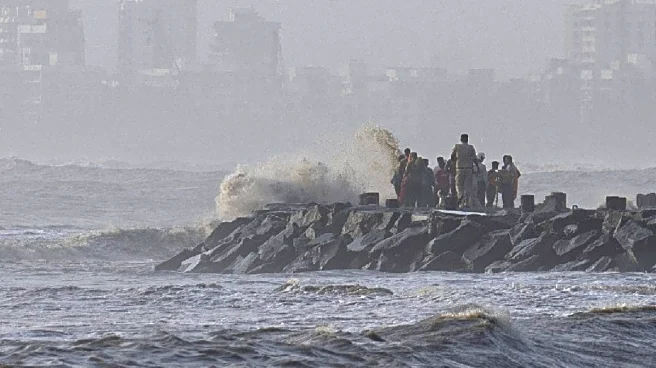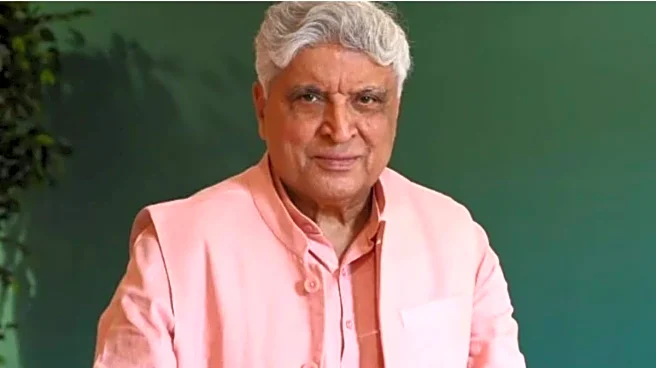What is the story about?
Prime Minister Narendra Modi will inaugurate the first phase of the Navi Mumbai International Airport (NMIA) on October 8, a milestone in India's aviation infrastructure development. The project, constructed at an estimated cost of ₹19,647 crore, is poised to commence commercial operations in December, 2025.
The Navi Mumbai facility marks the second international airport in the Mumbai Metropolitan Region (MMR), supplementing the existing Chhatrapati Shivaji Maharaj International Airport (CSMIA). Developed as a greenfield project, NMIA recently secured its aerodrome licence from the Directorate General of Civil Aviation (DGCA) on 30 September.
The airport is being developed in phases by Navi Mumbai International Airport Ltd, a joint venture in which the Adani Group holds a 74% stake, while the remaining 26% is owned by CIDCO (City and Industrial Development Corporation of Maharashtra), the state’s urban development authority.
CIDCO Vice Chairman and Managing Director Vijay Singhal confirmed the inauguration during a media briefing on Saturday. “The second airport of Maha Mumbai – Navi Mumbai International Airport – will be inaugurated by Prime Minister Narendra Modi on 8 October,” he stated.
Also read | Navi Mumbai airport gets DGCA green light to begin commercial operations
According to Singhal, the Prime Minister is expected to arrive at the airport at approximately 2:40 pm and will remain on site for nearly two hours. His itinerary includes a tour of the terminal building, followed by an address to dignitaries and guests.
The International Air Transport Association (IATA) has designated the code ‘NMI’ to the new airport. Several domestic airlines, including the Air India Group, IndiGo, and Akasa Air, have already confirmed partial relocation of operations to NMIA once it becomes operational.
Spanning 1,160 hectares, NMIA is envisioned to be one of Asia’s largest aviation hubs. Upon full completion, it will house four terminals and support up to 90 million passengers annually, along with a cargo handling capacity of 3.25 million metric tonnes.
Also read | Photos of Navi Mumbai International Airport surface ahead of Sept 30 inauguration
In its initial phase, Terminal 1 has been completed, with a capacity to handle 20 million passengers and 0.8 million metric tonnes of cargo per year. A single runway will support flight operations during this phase.
Comparatively, the current Mumbai airport accommodates around 55 million passengers annually. Once both airports are fully functional, the combined capacity will reach approximately 150 million passengers per year, significantly boosting the region’s global aviation footprint.
Singhal noted that the complete development of NMIA, including all four terminals, is projected to cost around ₹1 lakh crore.
NMIA is also set to become India’s first multi-modal transport-linked airport, offering connectivity via expressways, highways, metro rail, suburban trains, and even water taxis. Furthermore, it has been designed as a sustainable facility with provisions for the storage of sustainable aviation fuel.
Among its advanced features is an Automated People Mover (APM) system, which will connect all terminals internally, ensuring efficient passenger movement across the expansive airport premises.
The Navi Mumbai facility marks the second international airport in the Mumbai Metropolitan Region (MMR), supplementing the existing Chhatrapati Shivaji Maharaj International Airport (CSMIA). Developed as a greenfield project, NMIA recently secured its aerodrome licence from the Directorate General of Civil Aviation (DGCA) on 30 September.
The airport is being developed in phases by Navi Mumbai International Airport Ltd, a joint venture in which the Adani Group holds a 74% stake, while the remaining 26% is owned by CIDCO (City and Industrial Development Corporation of Maharashtra), the state’s urban development authority.
To
every hand that worked and every heart that cared, this is your creation. ???? https://t.co/4KuwTiZCer
— Gautam Adani (@gautam_adani) October 3, 2025
CIDCO Vice Chairman and Managing Director Vijay Singhal confirmed the inauguration during a media briefing on Saturday. “The second airport of Maha Mumbai – Navi Mumbai International Airport – will be inaugurated by Prime Minister Narendra Modi on 8 October,” he stated.
Also read | Navi Mumbai airport gets DGCA green light to begin commercial operations
According to Singhal, the Prime Minister is expected to arrive at the airport at approximately 2:40 pm and will remain on site for nearly two hours. His itinerary includes a tour of the terminal building, followed by an address to dignitaries and guests.
The International Air Transport Association (IATA) has designated the code ‘NMI’ to the new airport. Several domestic airlines, including the Air India Group, IndiGo, and Akasa Air, have already confirmed partial relocation of operations to NMIA once it becomes operational.
Spanning 1,160 hectares, NMIA is envisioned to be one of Asia’s largest aviation hubs. Upon full completion, it will house four terminals and support up to 90 million passengers annually, along with a cargo handling capacity of 3.25 million metric tonnes.
Also read | Photos of Navi Mumbai International Airport surface ahead of Sept 30 inauguration
In its initial phase, Terminal 1 has been completed, with a capacity to handle 20 million passengers and 0.8 million metric tonnes of cargo per year. A single runway will support flight operations during this phase.
Comparatively, the current Mumbai airport accommodates around 55 million passengers annually. Once both airports are fully functional, the combined capacity will reach approximately 150 million passengers per year, significantly boosting the region’s global aviation footprint.
Singhal noted that the complete development of NMIA, including all four terminals, is projected to cost around ₹1 lakh crore.
NMIA is also set to become India’s first multi-modal transport-linked airport, offering connectivity via expressways, highways, metro rail, suburban trains, and even water taxis. Furthermore, it has been designed as a sustainable facility with provisions for the storage of sustainable aviation fuel.
Among its advanced features is an Automated People Mover (APM) system, which will connect all terminals internally, ensuring efficient passenger movement across the expansive airport premises.
Do you find this article useful?
/images/ppid_59c68470-image-175964503400128643.webp)













/images/ppid_59c68470-image-175938503407943017.webp)
/images/ppid_59c68470-image-175948753106378416.webp)